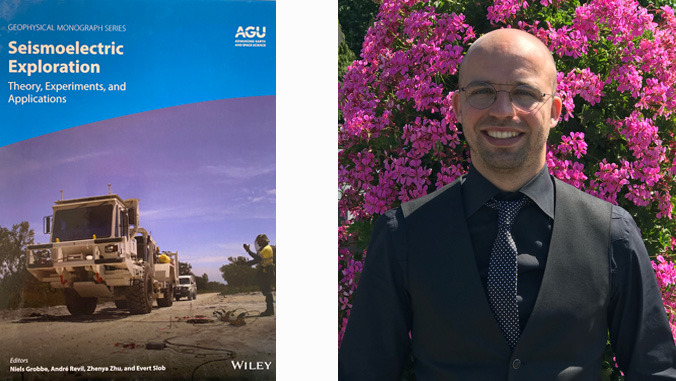
A timely resource for anyone interested in the geosciences and geophysics, Seismoelectric Exploration – Theory, Experiments, and Applications has been edited by Niels Grobbe, affiliate faculty in Geophysics at the University of Hawaiʻi at Mānoa Water Resources Research Center and the Hawaiʻi Institute of Geophysics and Planetology. Co-editors are André Revil, Zhenya Zhu, and Evert Slob.
Seismoelectric Exploration – Theory, Experiments, and Applications offers an introduction into the novel seismoelectric geophysical method, suitable for undergraduate and graduate students, postdocs, faculty and other interested members of the scientific community, while simultaneously describing the state-of-the-art of seismoelectrics for experts in the field.
The seismoelectric method is a novel geophysical technique that makes use of the naturally-occurring coupling of seismic (e.g., acoustic sound) waves and electromagnetic fields. As seismic waves propagate, they temporarily deform the medium through which they travel, thereby squeezing the fluids that are present in the rock from one place to another. The fluids in the subsurface interact with the surrounding rock, and contain electrically charged particles (ions). This movement of ions causes small electromagnetic signals that can be measured at the Earth’s surface. These so-called seismoelectric signals can provide important and unique information about the properties of the rock (type of rock, amount of pore space, connectivity of the pores, fracture networks, etc.), the pore-fluids within the rock (oil, water, gas, contaminants, salt water, fresh water, etc.), and the overall geologic structure of the study area.
The methodology offers access to types of information that other existing geophysical methods cannot offer. This crucial information about the subsurface can be used for a wide variety of applications, such as sustainable management and production of fresh-water resources and energy resources, studying the Arctic and Antarctic regions in the context of climate change, and for hazard and risk mitigation.
Seismoelectric Exploration – Theory, Experiments, and Applications is not only of interest to geoscientists; it is an important resource for anyone working on imaging science, such as in medical imaging, geophysical imaging and national security.
Seismoelectric Exploration – Theory, Experiments, and Applications is available for purchase, as hardcopy or e-book, at Wiley and Amazon.
This is an example of UH Mānoa’s goal of Excellence in Research: Advancing the Research and Creative Work Enterprise (PDF), one of four goals identified in the 2015–25 Strategic Plan (PDF), updated in December 2020.

